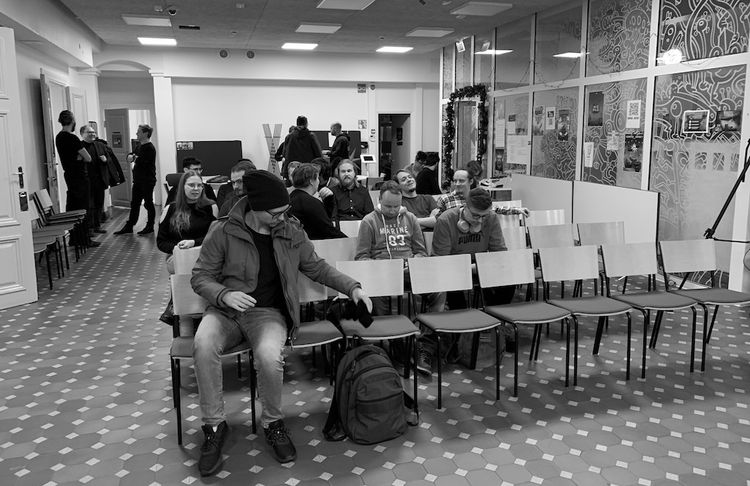7 Ways A Gaming Startup Can Show Traction

You are starting a games company, and you have an experienced team in place. And the idea for your first game is excellent.
You’re attending your first meeting with a VC, which is short for venture capital investors. You’d want to raise money to start making the game. The meeting went well, and you are expecting to hear back from the investor during the following week.
The VC gets back to you over a call. They’ve decided not to invest. They liked your team a lot, and the idea made sense. They just want to see some traction before they can invest in your company.
After the call, you ask yourself, what is traction, and how can I show traction when the game should be built with investor money? And how much is enough traction? Let me try to clarify the rules, and what it takes to convince a VC of real traction.
Traction for a gaming startup
Let’s first define what traction is. For gaming startups, it’s about showing evidence to the investor that your company is making progress.
On the Elite Game Developers podcast, Harri Manninen, the founding partner of PlayVentures, says:
“The common characteristics [of gaming companies who raise subsequent rounds] is to show clear progress from the previous fundraising. And for different companies this might mean different things. Sometimes it’s on the product side, but sometimes it’s on the KPI side. Sometimes it’s something else, especially if you’re building like something that’s more complex, and it’s harder to get early KPIs out of that. It’s progress on the team side, on the technology side, but showing constant progress is important.”
Listen to episode 45 by clicking here.
The most critical requirement for showing traction is that founders need to approach the startup with building a company first, not making a game first.
When you understand it’s about company building, what are the common problems? Things that hinder their progress and prevent traction from being surfaced?
#1 Progress on team building
If you are missing critical people on the team, like a product person or a COO, you can show progress by attracting new talent to your founding or “early employees” team.
Many experienced people will have e.g. mortgages for apartments they’ve bought, kids and family to support, or other financial commitments, and can’t take a 50% pay cut. In these cases, you need to get creative. Maybe they’re involved part-time first, or they are waiting for you to raise the seed round so that they’d only need to take a 25% pay cut.
By showing that you have experienced people committed to joining, you can show the investors that you are making progress on the team side.
#2 Prototype created and playtesting started
The earlier you can get a prototype in place, the better you will be in place to raise a seed round.
As you get people to playtest the prototype, you’ll start to collect data on what is working and what isn’t. All this data is evidence that you are on the right track, that you are progressing.
An excellent tool for doing playtesting on mobile is PlaytestCloud. They provide developers a way to put their game in the hands of testers from around the world. Check it out at https://playtestcloud.com
#3 Define your traction measurement
When you get into having a game that’s ready for launch, you’ll want to have a definition in place for your metrics.
My first recommendation is that you take the lead in defining traction metrics for your startup.
In free-to-play games, the primary metric to look for is retention. How many players will return to your game on the day after they tried the game, which is called Retention Day-1. Then you start looking at Day-3, Day-7, and onwards. The more content your game has, the longer you want your players to be retained.
After that comes monetization, which is tied to the game’s user acquisition costs. These costs are relevant because you want your marketing expenses to be returned by player monetization during a specific time.
Then you should define the benchmarks. Figure out what your peers in the industry are expecting as okay, good enough, and stellar metrics. Ask around, and people will share these details.
As ballpark numbers for mobile free-to-play, you want retention day-1 to be above 40%, and you want to have at least the signals in place to have a return on your ad spend.
Once you’ve defined the metrics and the benchmarks, the work starts. Each step towards having these numbers is evidence that you are progressing.
#4 Not taking forever to launch
Let’s look at an example of how not to proceed: A gaming startup has been following the advice where you’d build a game and finally soft launch once the game was polished enough. That’s when you start qualifying players in, and you begin to see engagement numbers.
If it takes 12 months to show traction, you’re quite late. But it also reveals something about the founders. Why are they taking so long to expose the product to actual players? Are they blinded by their belief that this game idea is too great to fail? There might be countless reasons. Maybe you are working with a partner who can’t let the game out before it’s polished enough.
Launch as early as possible, to start gaining evidence that you are working on something that will work.
#5 After the launch, you aren’t stalling
The company got the game out. And now they are building feature after feature, but the work seems to be all over the place.
Many developers fast follow others. Often they are building monetization features when they still can’t retain their players because their engagement and retention metrics suck. It’s a leaking bucket. You pour in players, but they don’t stay.
Work on keeping players playing the game first, then focus on your progress on the monetization side.
#6 Doing changes when things aren’t working
I’ve often seen that tutorial tweaks won’t improve a game with lousy retention metrics, like Day-1 being at below 25%.
The developers who’ve analyzed the situation, made decisions and changed their game drastically have usually seen more significant results.
If the numbers just aren’t improving, there’s also the possibility that the game is just totally the wrong game for the market or the platform. I’ve often seen that first-time founders won’t know that they should pivot the company towards a new kind of business until it’s too late.
I experienced this with my first games company, Ironstar Helsinki. We spent several years on our first game until we finally changed direction, killed the game, and started to build a new game. Six months later, the company was profitable.
#7 Launched the game and can clearly articulate the next steps
Often the founders don’t have enough domain expertise to know what is going to happen next. They might have okay numbers but aren’t sure what they should do next.
The optimal route is the quickly produce updates to the game, with the ain of improving retention numbers and then tackling monetization.
The KPI development blog post from Traplight is an excellent collection of ideas and understanding into a focused effort to find even better metrics.
Going back to the investor
Even when an investor has said no, you could keep them in the loop. The main thing they will want to hear is that you’ve made progress.
In my pitching only course, Pitch Your Games Company, I have a pitch deck template where I go through the progress slides. But in short, you should have a slide that points out the key progress that you’ve made.
You can also create an appendix document that highlights the progress so far. Also, the founder should create a roadmap. The roadmap should indicate what the progress will look like at each point of the roadmap.
Repeat this process until you get a yes from the investors.
After the funding is secured, the same process should continue. You should be prepared to keep showing progress for existing investors and investors in future funding rounds.
Did you enjoy this article?
Here are the most popular fundraising articles on Elite Game Developers:





